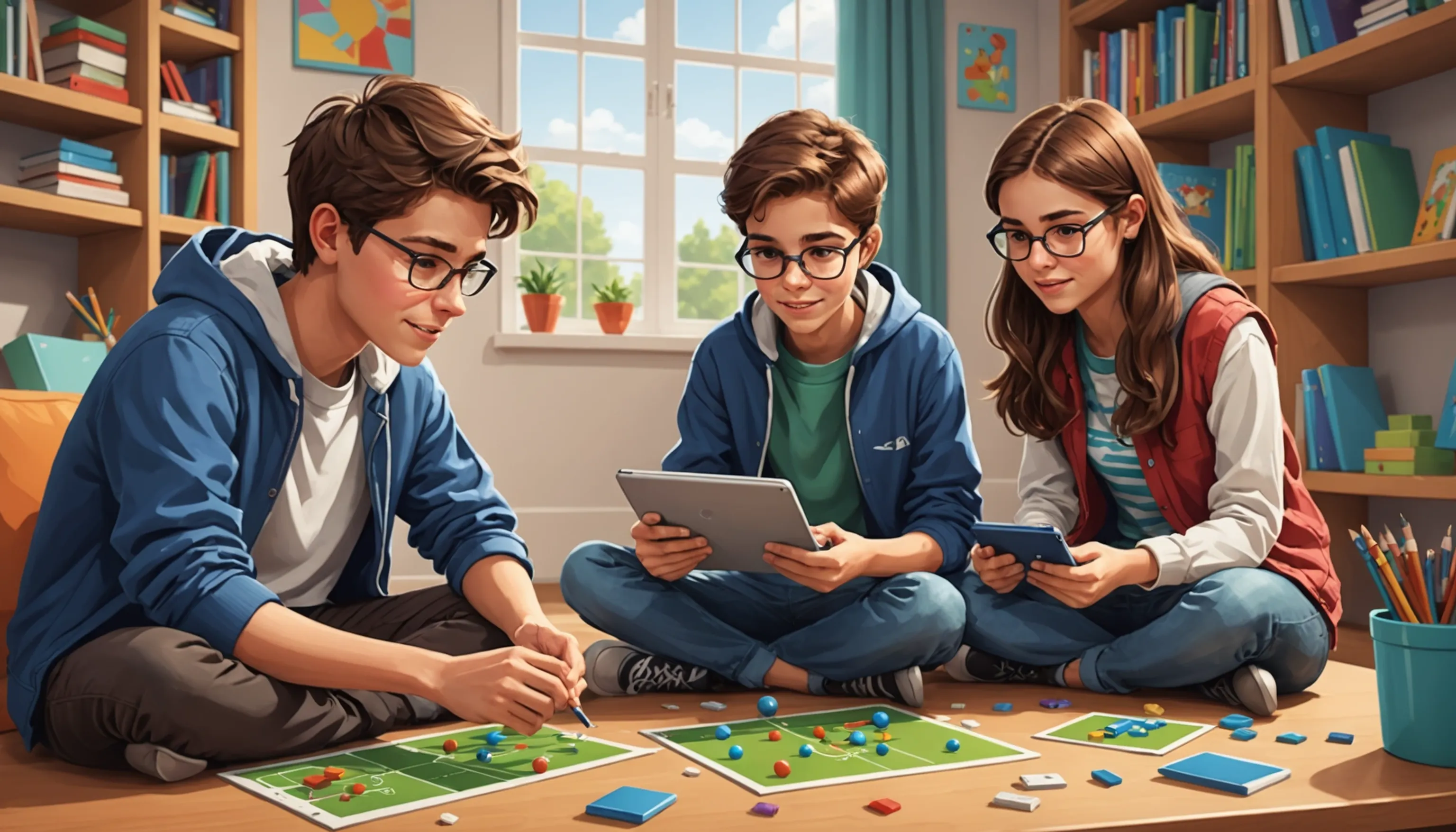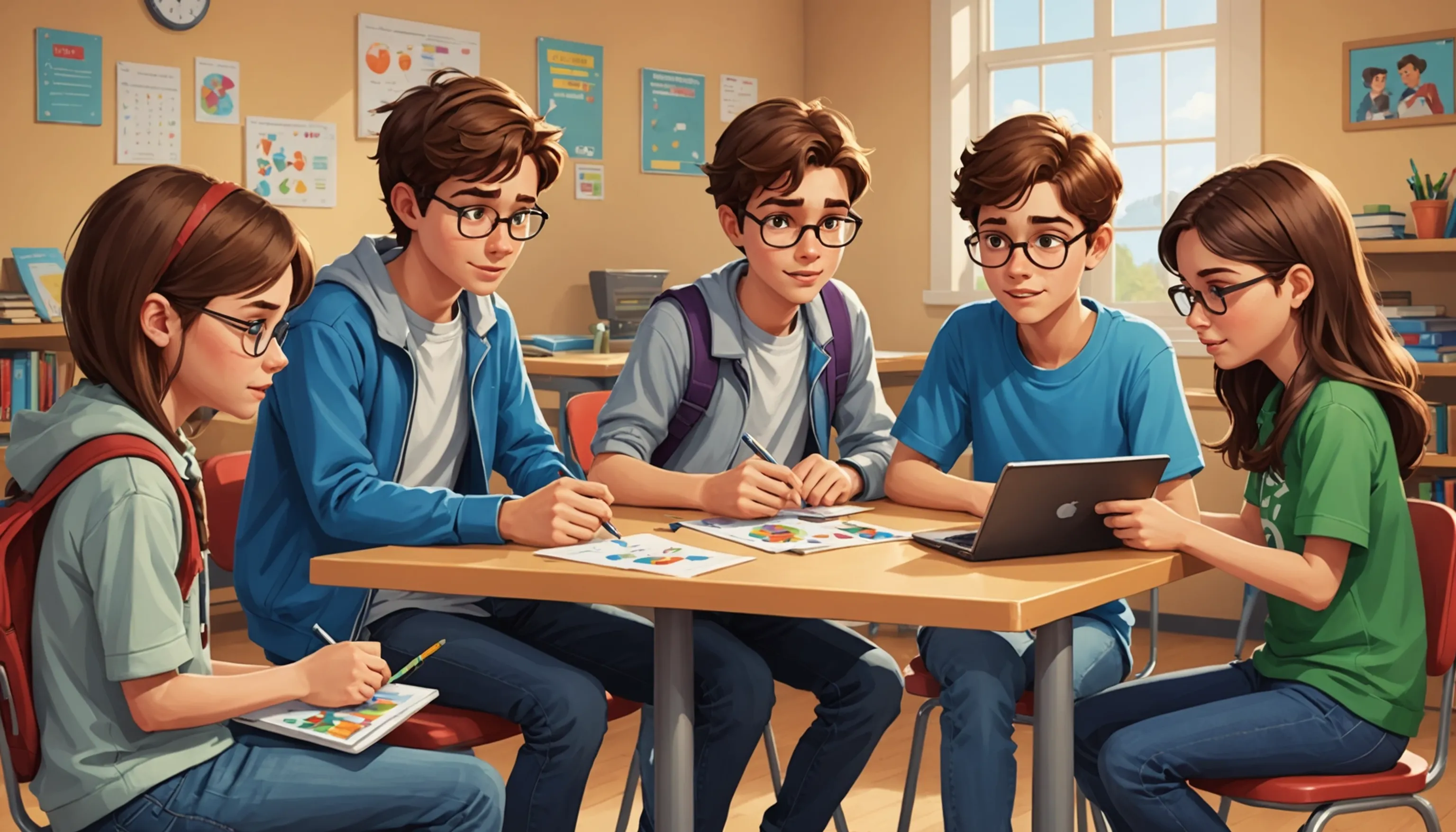Educational Games for Teenagers
 HvWHenry van Wagenberg
HvWHenry van Wagenberg
Benefits of Educational Games for Teenagers
Educational games offer numerous benefits for teenagers, making learning enjoyable and effective. These games engage students, enhancing their motivation and interest in various subjects. By integrating fun with education, teenagers are more likely to retain information.
Moreover, educational games foster social interaction, allowing teens to collaborate and communicate with peers, which is crucial for developing interpersonal skills. Additionally, these games can cater to different learning styles, ensuring that every student can benefit. Ultimately, educational games serve as a powerful tool for enhancing the learning experience, promoting a love for knowledge among teenagers.
How Educational Games Enhance Learning
Educational games enhance learning by creating an engaging and interactive environment for teenagers. These games combine fun with educational content, making it easier for students to grasp complex concepts. When teenagers play educational games, they actively participate in the learning process, which leads to better retention of knowledge.
One of the key ways these games enhance learning is through immediate feedback. Players receive instant results on their performance, allowing them to understand their strengths and weaknesses. This real-time feedback encourages them to improve and take ownership of their learning journey.
Additionally, educational games promote problem-solving skills. Many games present challenges that require players to think critically and develop strategies to overcome obstacles. This not only enhances cognitive abilities but also prepares teenagers for real-life situations where they must make decisions under pressure.
Furthermore, educational games often incorporate multisensory learning, appealing to various learning styles. Visual, auditory, and kinesthetic learners can all benefit from the diverse experiences these games provide. By engaging multiple senses, educational games help reinforce learning.
Finally, these games foster a sense of community among players. Teens often work in teams, which encourages collaboration and communication. This social aspect not only makes learning more enjoyable but also helps students build essential skills that will serve them well in their future careers.

Promoting Critical Thinking through Games
Promoting critical thinking through educational games is a powerful way to enhance teenagers' cognitive skills. These games challenge players to analyze situations, evaluate options, and make informed decisions. By presenting complex problems that require thoughtful solutions, educational games encourage teenagers to think beyond the surface.
One significant aspect of these games is their ability to simulate real-world scenarios. For example, strategy-based games often require players to assess risks, allocate resources, and anticipate outcomes. This process mirrors real-life decision-making, equipping teenagers with the skills to navigate challenges outside of the game environment.
Moreover, educational games foster logical reasoning and analytical skills. Players must often identify patterns, draw conclusions from data, and develop strategies to achieve their objectives. This analytical approach not only enhances gameplay but also translates to improved problem-solving abilities in academic settings.
Collaboration is another essential component in many educational games. When players work together to solve problems, they engage in discussions that require them to articulate their thoughts, defend their viewpoints, and consider alternative perspectives. This collaborative process is crucial for developing interpersonal skills and understanding the value of teamwork.
Lastly, the iterative nature of many games allows for experimentation. Players can test different strategies, learn from their mistakes, and adjust their approaches based on outcomes. This trial-and-error process encourages resilience and adaptability, essential traits for critical thinking. Overall, educational games serve as a dynamic platform for promoting critical thinking among teenagers.
Types of Educational Games for Teenagers
There are various types of educational games suitable for teenagers, each catering to different learning styles and subjects.
- Digital educational games: These online or app-based games cover a wide range of topics, from math to language arts, making learning interactive and fun.
- Board games: Many classic board games have educational components, teaching strategy, critical thinking, and subject-specific knowledge.
- Outdoor educational games: These games combine physical activity with learning, encouraging teamwork while reinforcing concepts.
- Simulation games: These allow players to experience real-world scenarios, enhancing problem-solving skills.
Each type promotes engagement and skill development in unique ways.

Digital Educational Games
Digital educational games have revolutionized the way teenagers engage with learning. These games, accessible through computers, tablets, and smartphones, offer interactive experiences that make education both fun and effective. One of the primary advantages of digital educational games is their ability to cater to various learning styles. Students who may struggle with traditional learning methods often find that these games resonate with their unique ways of understanding.
Moreover, digital educational games provide instant feedback, allowing players to recognize their mistakes and learn from them in real-time. This immediate reinforcement helps teenagers grasp complex concepts more quickly and confidently. For example, math games that adapt to a player's skill level can challenge students just enough to keep them engaged without overwhelming them.
Additionally, many digital educational games incorporate elements of gamification, such as rewards, levels, and achievements. This approach not only motivates students to continue playing but also encourages them to strive for mastery in various subjects. Studies have shown that gamified learning experiences can significantly improve retention rates and foster a deeper understanding of the material.
Social interaction is also a key component of many digital educational games. Teenagers can collaborate or compete with peers, enhancing their communication skills and promoting healthy competition. This social aspect creates a sense of community among players, making learning a shared experience. Overall, digital educational games serve as an engaging tool for enhancing the educational experience for teenagers.
Board Games with Educational Value
Board games with educational value offer a unique and interactive way for teenagers to learn while having fun. These games often combine strategy, critical thinking, and teamwork, making them an excellent choice for fostering essential skills in a relaxed environment. For instance, games like Scrabble enhance vocabulary and spelling, while Settlers of Catan promotes resource management and negotiation skills.
One of the primary benefits of educational board games is their ability to encourage social interaction. Unlike digital games, board games require face-to-face engagement, which helps teenagers develop communication and collaboration skills. Players must articulate their thoughts, listen to others, and work together to achieve common goals, fostering a sense of community.
Moreover, many board games are designed to teach specific subjects. For example, games like Ticket to Ride can introduce concepts of geography and planning, while games like Risk can spark interest in history and strategic thinking. By integrating educational content into gameplay, these board games make learning enjoyable and memorable.
Additionally, board games promote critical thinking and problem-solving skills. Players often face challenges that require them to devise strategies, assess risks, and adapt their plans based on the actions of others. This dynamic environment encourages teenagers to think critically and develop resilience when faced with setbacks.
In conclusion, board games with educational value are an excellent tool for promoting learning while providing an enjoyable, social experience for teenagers.
Outdoor Educational Games
Outdoor educational games provide a fantastic way for teenagers to learn while enjoying physical activity. These games often combine fun with learning objectives, fostering teamwork, communication, and problem-solving skills. Examples include scavenger hunts that teach critical thinking and geography, or relay races that incorporate math challenges.
Additionally, outdoor games promote physical fitness, which is crucial for overall well-being. They encourage teenagers to engage with nature and develop a sense of adventure. By blending education with outdoor play, these games create memorable learning experiences that enhance social skills and academic knowledge.
Games that Promote Teamwork and Collaboration
Games that promote teamwork and collaboration are essential tools for fostering social skills among teenagers. These games encourage players to work together, communicate effectively, and build trust, which are vital components of successful collaboration. One popular type of game that emphasizes teamwork is the team-building exercise, where participants must complete tasks that require joint effort and strategy.
For instance, games like Escape Rooms challenge players to solve puzzles and riddles collectively. This type of game not only sharpens critical thinking skills but also teaches players to rely on each other’s strengths and perspectives. Another excellent example is capture the flag, where teams must strategize, plan, and execute their tactics to succeed. Such outdoor games enhance cooperation and adaptability, as players must adjust their strategies based on their opponents' actions.
Additionally, many board games, such as Pandemic, require players to collaborate to achieve a common goal. These games emphasize the importance of communication, as players must share information and coordinate their moves to overcome challenges.
Furthermore, digital games often incorporate teamwork elements, allowing players to connect online and collaborate on missions or tasks. This virtual interaction fosters a sense of community and helps teenagers develop essential social skills.
In conclusion, games that promote teamwork and collaboration play a crucial role in developing interpersonal skills among teenagers, preparing them for future academic and professional environments.
Incorporating Learning into Physical Activity
Incorporating learning into physical activity is an innovative approach that combines education with exercise, making the learning process engaging and dynamic for teenagers. This method not only promotes physical fitness but also reinforces academic concepts in a fun way. For instance, outdoor games like math relays require participants to solve math problems at different stations before advancing to the next challenge. This format encourages teamwork while reinforcing mathematical skills.
Another effective way to integrate learning into physical activity is through educational scavenger hunts. In these activities, teenagers must search for specific items or complete tasks related to a particular subject, such as history or science. This hands-on approach not only makes learning interactive but also helps students retain information better as they connect theoretical knowledge with real-world applications.
Additionally, sports can be a platform for learning. For example, basketball can teach concepts of geometry, such as angles and trajectories, while soccer can incorporate lessons on physics regarding motion and force. Coaches can frame discussions around the rules of the game to include strategy and teamwork, which are important life skills.
Moreover, incorporating learning into physical activities encourages a healthy lifestyle, which is crucial for teenagers. By making education active and enjoyable, students are more likely to develop a positive attitude toward learning and physical fitness.
In summary, blending education with physical activity creates a holistic learning experience that benefits both the mind and body.
